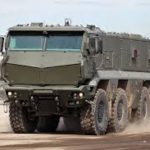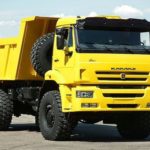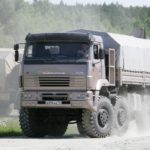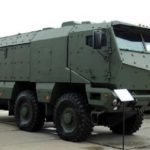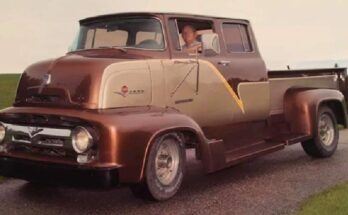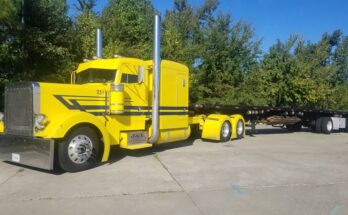Sanford and Son style mid-50’s restored Ford Pickup
Willys6 reporting for Wheels List, on location at “Coffee & Cars,” Nor Cal Auto Museum.
WheelsList,Net
Kamaz Trucks: From Russia with Love
You might have heard more about these trucks if you lived in Russia. Or even Africa. Or Vietnam.
Americans who are aware of the famous Peterbilt trucks will see something familiar with them though: long, distinctive bonnets
KAMAZ trucks are Russian made. And they are driven not just by civilians but also by the military.
But if you think that makes them blob-like non entities, or tank-like. Or capable only of brute strength (similar to what many Americans think about Russia-made products), please reconsider.
A site called Red Bull in reviewing a 2016 model found:
“The new Kamaz Master truck is quite literally not just a pretty face. The elongated snout hides a plethora of new technology.”
Recent news accounts said that the Russian KAMAZ-Master truck was equipped with sensors capable of detecting road signs. But also other vehicles. And even people.
The auto-pilot version is a joint project between the company’s Cognitive Technologies and Russia’s National University of Science and Technology.
Russian trucks go well beyond its borders.
Other news reports said that negotiations were underway recently to make Morocco the main platform of KAMAZ exports to Africa.
According to the Russian minister, negotiations are underway for the installation of Russian facilities which will make Morocco their platform for exports to Africa.
Too hot for cold-accustomed Russian trucks?
Hardly.
An African deputy minister pointed out the Russian trucks performed very well in hot weather, showing “very good performance in our climatic conditions.”
A news report found that Russia was already supplying trucks to ten African nations.
In Vietnam, meanwhile, the truck manufacturer was looking at the possibility of getting preferential tax treatment.
In fact, a lot about the Russian company may be a surprise to many.
Russian failings such as supplying mass consumer goods and vehicles such as their cars are well-known.
Russian-made Ladas are commonly found in long-time Russian ally, Cuba. The joke there, where Cubans have long been famous for their classic American cars, is that people who drive Ladas’ “don’t have a car, you have a Lada.”
Russia may not be the world’s leading manufacturer of cars, “But it is certainly very good at making trucks,” writes the site “Russia Beyond the Headlines.”
What is this Kamaz company?
Read on in Part II (click here).
Kamaz Trucks: From Russia with Love (Part II)
Go back to Part I of this article (click here).
Its first truck rolled off the production line on Feb. 16 of 1976.
Today, it produces more than 40 models of trucks, as well as trailers, buses, field engines, power plants and tools. Trucks include armored trucks, cement trucks, concrete mixer trucks, ready-mix trucks, garbage trucks, firefighting trucks, etc.
Its trucks can be found not just in Russia, Africa and Vietnam. But also in Eastern Europe, Latin America, China, the Middle East and Indonesia. And the world.
Reinforced KAMAZ trucks can also be found in the Russian army.
And they have won the Dakar Rally a record 13 times, according to the company.
Moreover, in 2011, 2013 and 2015 the team’s drivers completely occupied the winner’s circle for trucks.
Even the first models of KAMAZ trucks became “legendary,” according to the company.
Their history goes back almost half a century when Russian bureaucrats approved construction of a complex of heavy duty truck production plants. Since this was a communist and collective effort, more than 70 potential sites were studied.
The decision went in favor of Naberezhnye Chelny, then a small town on the Kama River with only about 27,000 people.
Its advantages were obvious.
The main reason, however, was its location by navigable rivers — The Kama River and the more famous Volga River.
Those bodies of water made it easier to ship readymade trucks to customers. There were also nearby railway lines to carry the necessary construction materials and equipment.
The fact that the huge construction company “KamGESenergostroy” existed in the region allowed construction of plant buildings and apartment blocks for prospective KAMAZ employees.
Globally known corporations began to be represented here. They included Swindell-Dressler, Holcroft, CE-Cast, Ingersoll Rand, Ex-Cello (U.S.A.), Hueller-Hille, Liebherr (West Germany), Morando, Fata (Italy), Renault (France), Sandvik (Sweden), Kamatsu and Hitachi (Japan).
Social challenges were also met.
Hundreds of thousands of people had to be provided by KAMAZ with housing, modern educational facilities, hospitals and clinics, numerous cultural, sporting, recreational and leisure centers.
KAMAZ was instrumental in transforming the Kama River Area into an industrial and scientific research hub.
The city of Naberezhnye Chelny grew to a population of more than half a million.
Perhaps to be expected, the company itself is similar to American counterparts in its lack of modesty.
The company itself says is trucks are created in the Republic of Tatarstan “at the bank of Kama River, created to deliver the goods all over the world.”
KAMAZ claims its trucks offer “high load capacity, good maneuverability, economy, reliability and low – maintenance powerful engine.”
The company says its trucks have “proven to be as adept at maneuvering in narrow streets and loading yards as at coping with country lanes.”
Their claim is that the trucks are “durable, economical and robust. It’s a vehicle you can rely on day by day.”
And adept at rallies as well?
Sure, why not?
“Kamaz-Master race trucks are conquering the deserts and hard landscapes during the off-road rallies,” the company says.
As noted, they have won more than a dozen times.
As Red Bull pointed out in its account of what is new at KAMAZ, their new rally machines are designed to again be winners.
They boast an all-new 980-horsepower diesel engine, capable of reaching speeds of 160 miles an hour via a 16-speed gearbox.
And the biggest hero in Russian truck racing, and seven-time winner Vladimir Chagin (known as the ‘Tsar of the Dakar’ and now Kamaz team principal), points out: “We’re at the dawn of a new era of race trucks. Cab trucks demonstrate a number of technical benefits, and an important goal for us this season is to innovate as much as possible.”
But more recent news found that their Russian KAMAZ-master truck racing team might miss the next race set for January of next year in South America.
KAMAZ’s problems are due to the departure of its main sponsor, the Russian Vnesheconombank, whose contract expired in December 2015.
However, the famous driver Chagin hinted in a Kommersant FM radio interview that the sponsorship issue might be resolved at the Russian presidential level.
If they can win again, it will certainly be a case of Russia…”with love.”
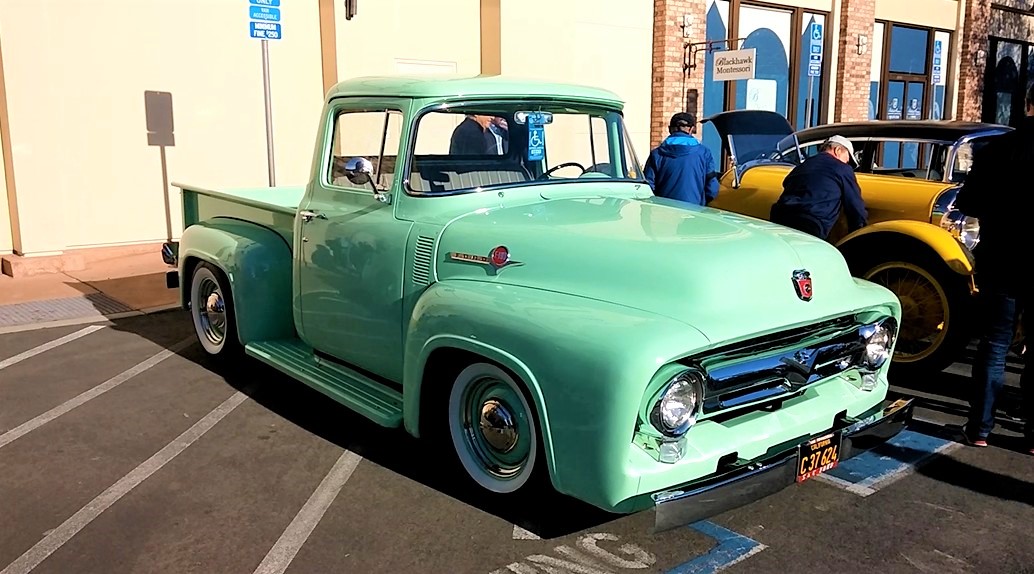 " >
" >
